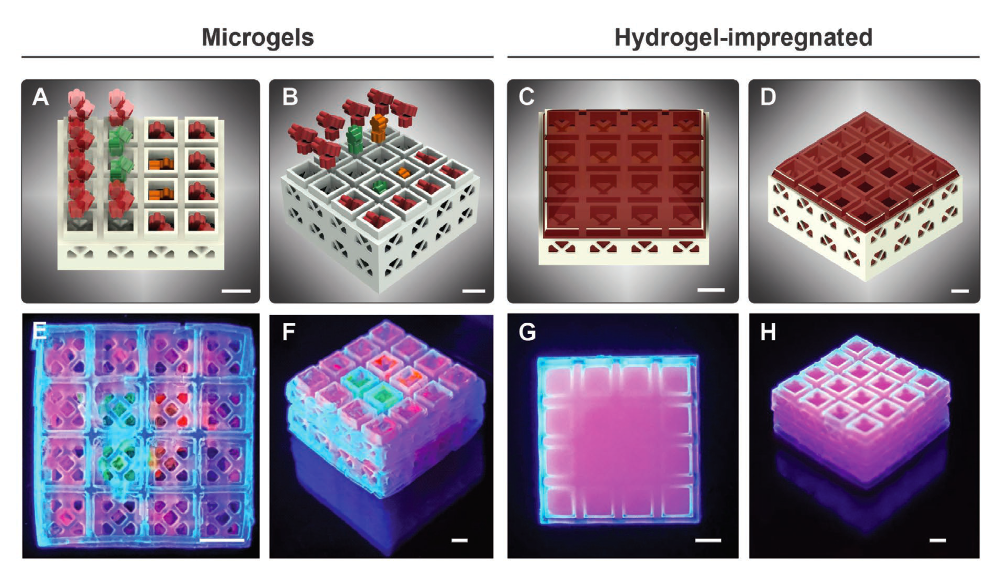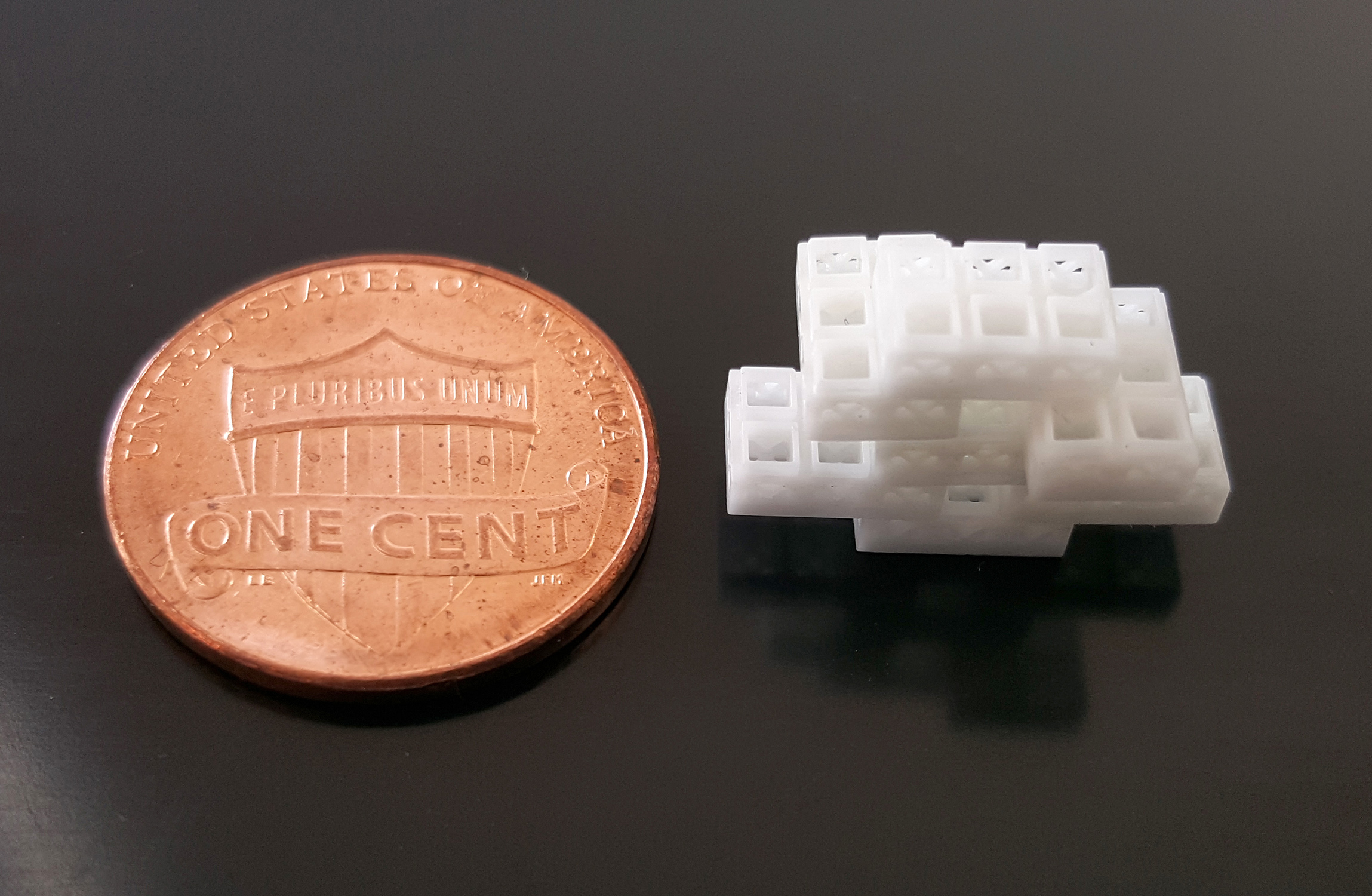China3D printingNet July 27th, researchers from Oregon Health and Science University (OHSU) used3D printingThe miniature Lego-style “bone bricks” have the potential to heal fractured skeletal tissues.
The researchers’ tiny hollow block is only the size of a small flea, and can be used as a scaffold, allowing hard and soft tissues to grow on it. In addition, the stackable nature of the modules allows them to be interlocked like building blocks, providing scalability and thousands of potential geometric configurations. Ultimately, the Oregon team aims to expand the scale of the technology and use organs made in the microcage production laboratory for human transplantation.
“The scaffold we are applying for a patent is easy to use; Dr. Luiz Bertassoni, associate professor of biomedical engineering at OHSU School of Medicine, said: “It can be stacked like Lego and placed in thousands of different configurations to suit almost any situation. Complexity and size.

The Oregon team’s “bone bricks” (pictured) can be stacked into more than 29,000 combinations. Picture from “Advanced Science” magazine.
3D printingBiomaterial scaffold
In recent years, the biological structure of printed scaffolds has become a research hotspot, especially for applications in tissue engineering or regenerative medicine. also,3D printingAdvances in technology have allowed patient-specific implantable structures to be designed in a more scalable manner, and in some cases they can even be produced on-site in hospitals. As a result, specialized equipment is no longer required to assemble these complex tissues, thereby reducing the lead time associated with implant production.
Nevertheless, the development of an ideal scaffolding system has proven to be elusive, which is still one of the reasons why the technology has not been more widely adopted in the hospital environment. The ideal tissue support must not only be compatible with the defect-specific architecture, but also allow for the controlled loading of cells, growth factors, and hydrogels. In addition, according to the Colorado team, temporary control of the tissue is essential for the ingrowth of the tissue within the graft material.
Oregon team3D printingBone brick
Conventionally, plastic surgeons repair complex fractures by implanting metal rods or metal plates into the patient’s body to stabilize the bones. Only in the later stages of the process, biocompatible scaffold materials containing powders or pastes are used to promote healing. On the other hand, the Oregon team has developed a novel scaffolding system that can accurately place hollow blocks containing a small amount of growth factor gel in the most needed position.
The co-author of the study, Dr. Ramesh Subbiah, a postdoctoral fellow in the Bertassoni OHSU laboratory, explained: ” 3D printingThe micro cage technology improves healing by stimulating the right cell types to grow in the right place and at the right time. Different growth factors can be placed in each block, allowing us to repair tissues more accurately and faster. “
The team’s miniature cages are hollow inside, allowing them to load cargoes of different biogel compositions in a controlled manner and create scaffolds with spatially deterministic indicators. As a proof of concept, the 3D team printed many blocks containing micro-particle hydrogels containing various growth factors. The results showed that cells entered the scaffold in a fast and controlled manner, thereby accelerating the formation and healing process of new tissue.

The size of each brick (pictured) is 1.5 mm. Filmed by OHSU.
Test researcher’s3D printingModular design
The team used β-tricalcium phosphate ceramics and a photolithography-based ceramic manufacturing (LCM)3D printingTechnology has created many modular miniature cage systems. The block size produced by this process is 3.375 mm3, the hollow size is 1.5×1.5×1.5 mm, and the wall thickness is 230


0 Comments for “Researchers are inspired by Lego to develop 3D printed self-healing “bone bricks””